Merging Sections in Canvas
Instructors teaching more than one section of the same course have the option to merge their sections in Canvas. This can save you time as it allows you to have one Canvas shell to update, which includes students in each course section.
However, faculty who choose to merge sections on Canvas must take extra steps to set up their course shells to comply with FERPA (privacy policies). Please review our tips and tutorials to learn more.
- Important Points
- Tutorial: Merging Two Sections or Courses
- Tutorial: Merging More Than Two Sections or Courses
- Making Courses FERPA-Compliant
Important Points
Keep in mind these important points before merging:
- Within Canvas, the process of merging sections is called “cross-listing." Keep in mind that “cross-listing” in Canvas is not the same as what LPC refers to as “cross-listed courses”. (If you are teaching “cross-listed courses" at LPC, those courses will still appear separately in Canvas until you “cross-list” them in Canvas.)
- Cross-listing in Canvas must be done before adding content, so please complete this step before copying or creating any new course content on Canvas.
- If you cross-list sections after the semester has begun and students have completed work in the course, both student work and your course content will be lost.
- If you merge sections that are officially cross-listed by LPC, all of the students will be able to see and interact with each other.
- If you merge sections that are NOT officially cross-listed by LPC, interaction between students in different sections must be limited to comply with FERPA laws. Review extra steps you will need to take to comply with privacy laws below.
- If you teach identical classes at LPC and Chabot, do not merge those classes for FERPA reasons.
- If you are teaching a HyFlex class, the DE Committee recommends that you do not merge that class with another course or section in Canvas. There are issues, such as attendance accounting, that are affected by merging.
Merging Two Sections or Courses
If you are ready to proceed with cross-listing two sections on Canvas, follow the instructions below:
- From your Dashboard, find the course number for the main section by hovering over it and looking at the BOTTOM of your browser window. Note the number.
This is not the CRN of your course; it's the Canvas course number.
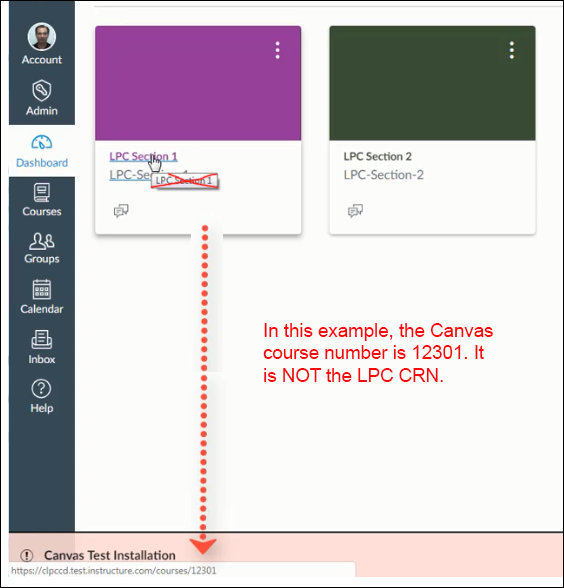
- Open the course that you want to move into the main section.
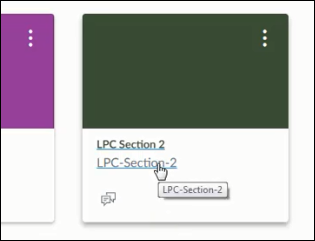
- Click Settings.
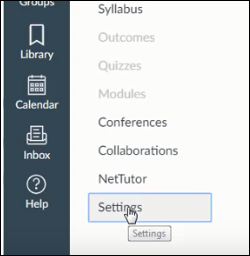
- Click the Sections tab.
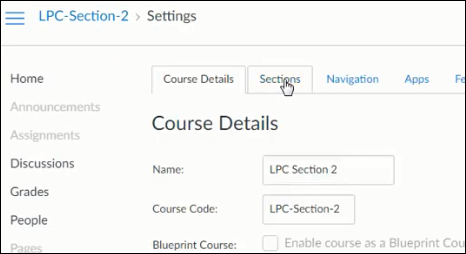
- You'll see your section hyperlinked. Click on it.

- Click Cross-List this Section.
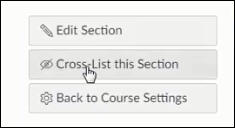
- You can either search for the course or type in the course ID (found in step 1).
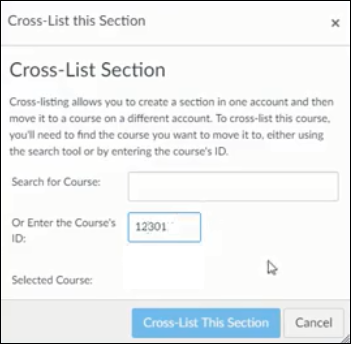
- Click in the white space next to where you entered the course ID, and you will see
that section automatically come up. Click Cross-List this Section.
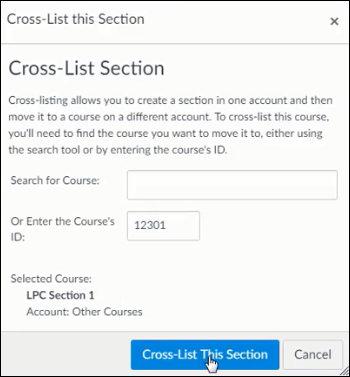
- To see all the students in the class, click on People in your course navigation menu.
You will notice that there are students from both sections. You, as the instructor,
are enrolled in both sections.

- Change the name of the merged course in order to encompass both sections by going
to Settings, then Course Details. Type a new course name, then copy and paste that
name into the Course Code box.
It is recommended that you input either the course name (ex. General Psychology), course number (PSYC 1), or course number and sections (PSYC 1 DE1 and DE2). You want students to be able to clearly identify their course on their Canvas Dashboards.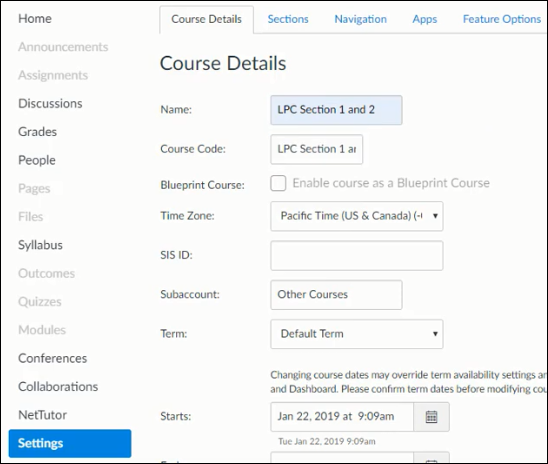
- Scroll down to the bottom, and click Update Course Details.

- To see the newly merged course, go back to your Dashboard. You might have to reload
the page.
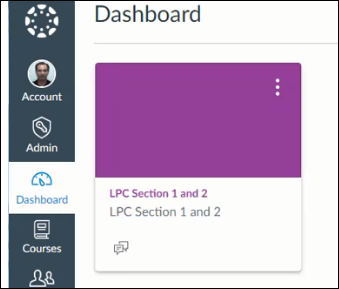
Here is a video of the above process:
Merging More Than Two Sections or Courses
- Complete the same steps above to merge the first section into the main course.
- Complete the same steps again to merge any other sections into the main course.
Here is a video of merging more than two sections or courses:
Making Courses FERPA-Compliant
Students have federally protected privacy rights and should only interact with other students in their specific section. Instructors who cross-list sections on Canvas must take extra steps to make their merged classes FERPA-compliant. If you are not teaching officially cross-listed LPC courses, follow the instructions below after merging their sections/courses:
- In your course, click Settings > Course Details > more options, and make sure that:
- Let students create discussion topics is NOT checked
- Let students organize their own groups is NOT checked
- Hide sections on the People page from students IS checked
- Disable comments on announcements IS checked
- Click the Update Course Details button.
- In you course, click Settings and then the Navigation tab. Be sure to disable:
- Chat
- Conferences
- Collaboration
- For Canvas Discussions, keep your sections separate by using group discussions, making sure to check the box next to "Require group members to be in the same section."
- If you are having students peer review assignments, you will have to either manually assign students to review other students in their section only, or duplicate your peer review assignment and assign each copy to a unique section only.
- When sending a message to two or more students in different sections from the Canvas Inbox, check Send an individual message to each recipient. This sends a separate copy to each student and hides the names of the recipients in the message header.
- If you are using Canvas Studio and want to allow Comments on a video, post the video separately for each section.
- When using Zoom for synchronous online courses, make sure the meetings are only assigned to students in their respective sections. If you are recording the meetings, only share recordings with students in their respective section.

